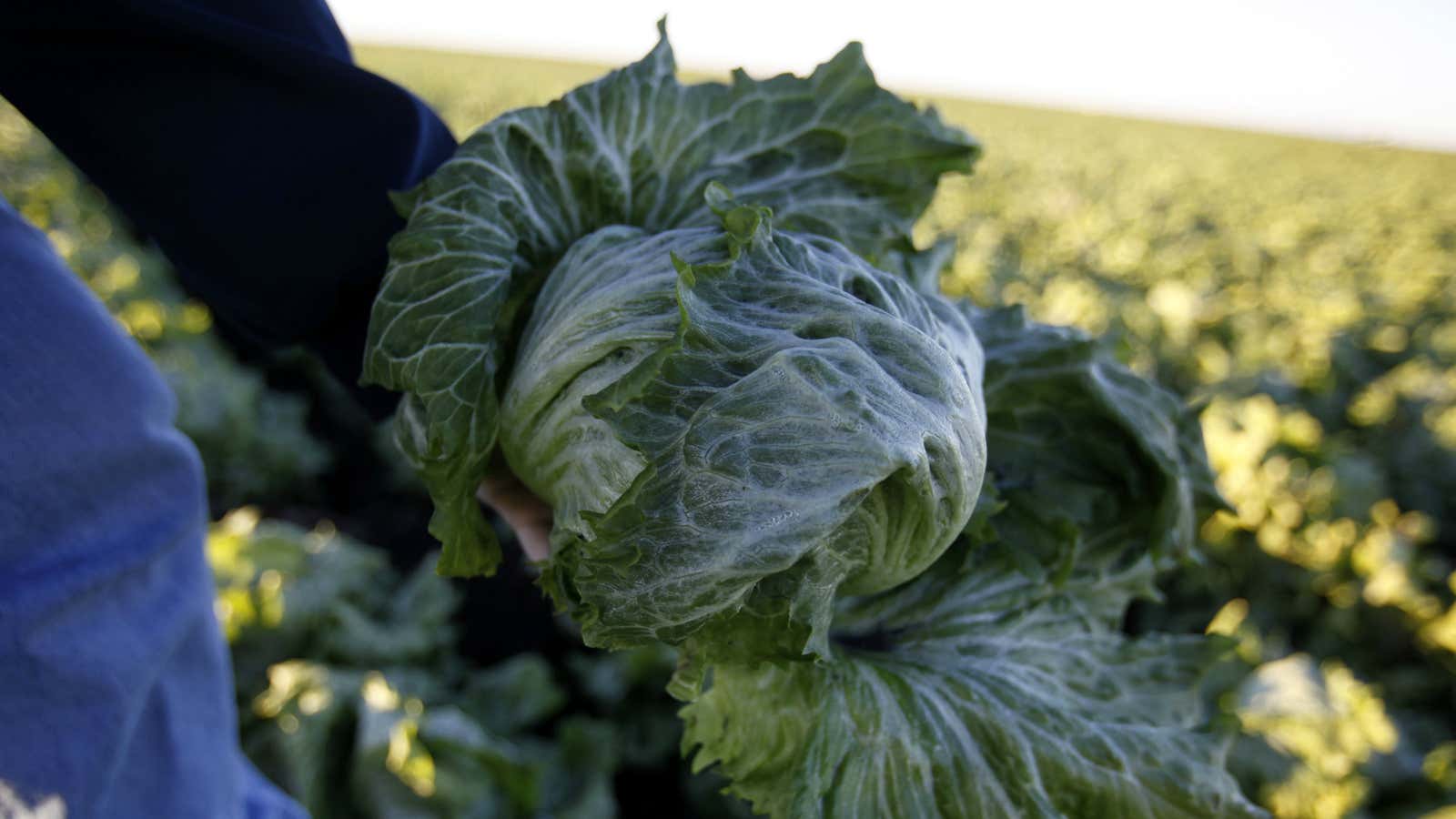A major US consumer watchdog organization is doubling down on its warning that Americans should avoid eating all romaine lettuce.
The recommendation by Consumer Reports comes as federal inspectors continue to track down the exact source of E. coli-ridden lettuce coming out of Yuma, Arizona. The outbreak is widespread, spanning 11 states and hospitalizing at least 22 people. Food-poisoning cases linked to the lettuce have been reported from coast to coast, including Washington state, New York, Connecticut, Pennsylvania, New Jersey, Idaho, Ohio, Illinois, Michigan, Missouri, and Virginia.
So far, Consumer Reports has taken a more aggressive tact than the US Centers for Disease Control and Prevention (CDC) and the Food and Drug Administration (FDA). The CDC has only suggested people avoid buying and consuming bagged, chopped romaine lettuce.
“It is unrealistic to expect consumers to figure out whether their romaine was produced in Arizona or somewhere else, especially when eating in a restaurant,” says Jean Halloran, director of food policy initiatives at Consumers Union, which publishes Consumer Reports. “The FDA should just advise consumers to avoid romaine lettuce until further notice.”
Food-borne pathogens are tricky to pin down. They’re shape-shifting threats that can find their way to a person through almost any food that hasn’t been fully cooked or processed. They can travel as easily via cheeseburger or even in a box of supermarket cake mix. In recent years, food-safety experts have turned to new technologies—such as genome sequencing—to more quickly assess threats and determine what action to take.
The most recent outbreak is the second time this year that romaine lettuce has been implicated in an E. coli scare. In January, US and Canadian officials reacted to a similar situation after at least 58 people reportedly feel ill from a different strain of the pathogen. It was discovered on lettuce in at least 13 US states. At least one Canadian died from the poisoning.
